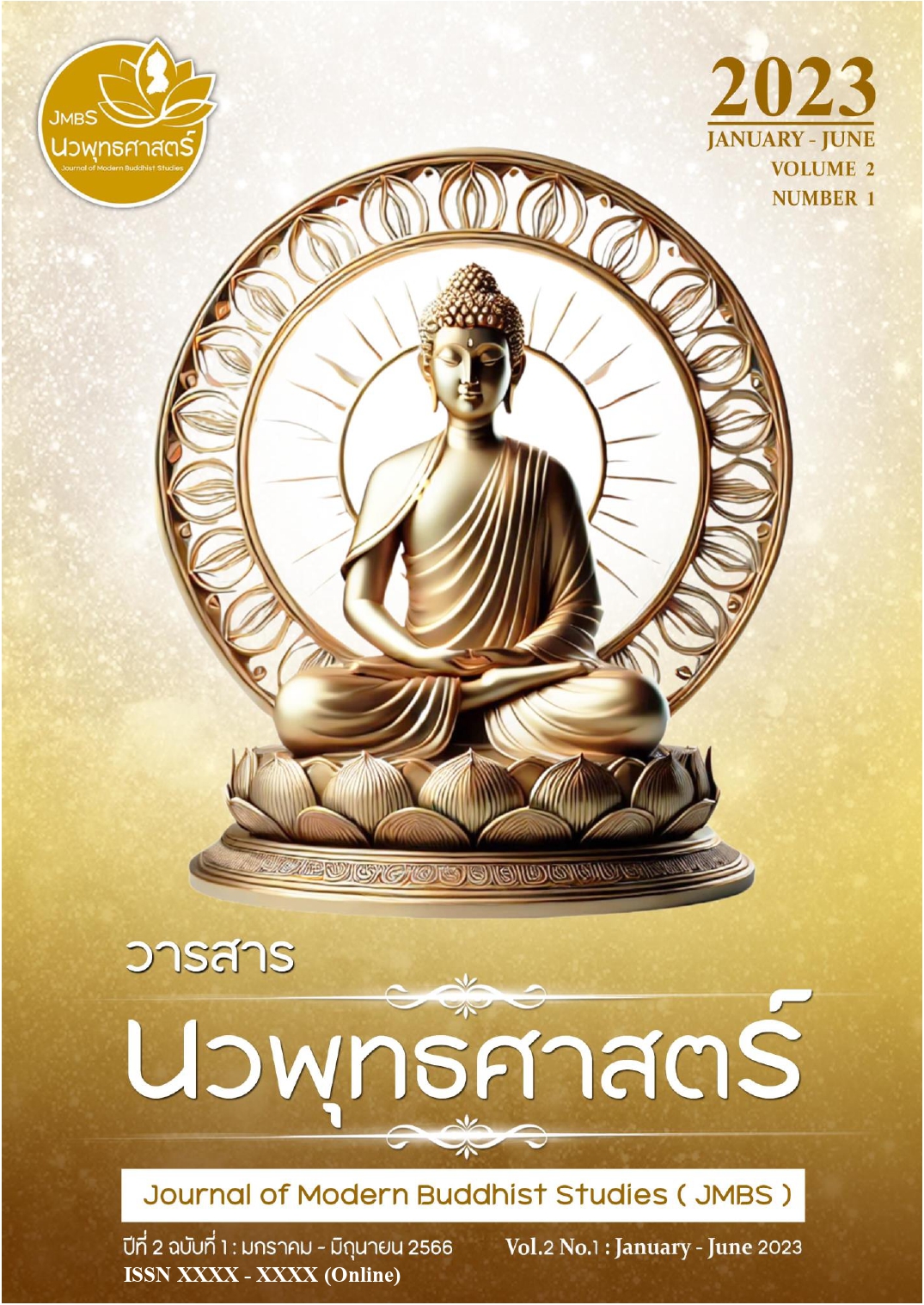ANALYSIS OF THE LIFESTYLE OF THAI MONKS AND THE PRACTICE OF VIPASSANA MEDITATION IN THE CONTEMPORARY ERA
Keywords:
Thai Monks, Lifestyle of Monks, Vipassana MeditationAbstract
The research employed Qualitative Research methods, collecting data through In-depth Interviews with 11 key informants, purposively selected for their expertise in analyzing the lifestyle of Thai monks and Vipassana meditation practices. The findings are as follows: 1.Principles of Vipassana Meditation Practice in the Modern Era The study identified five traditions of Vipassana meditation practiced by Thai monks in the 25th century and the present day. All traditions are based on the Four Foundations of Mindfulness (Satipatthana) as outlined in the Pali Canon and Visuddhimagga. However, differences exist in teaching methods, particularly in Kayanupassana (contemplation of the body), while Vedananupassana (contemplation of feelings), Cittanupassana (contemplation of mind), and Dhammanupassana (contemplation of mind objects) share similar approaches, albeit with varying explanations. 2.Analysis of the Lifestyle of Thai Monks and Vipassana Meditation Practices The research found variations in methods and practices based on individual teachers' techniques. These diverse approaches align with the principles of Theravada Buddhism and accommodate the individual tendencies of practitioners. This diversity helps individuals find suitable methods aligned with their disposition, with the ultimate goal being liberation from suffering and attainment of Nirvana. The findings highlight how Thai monks’ adherence to traditional Buddhist principles adapts to contemporary contexts, emphasizing the flexibility and inclusivity of Vipassana meditation to suit diverse practitioner needs while maintaining the core objective of spiritual liberation.
References
พระครูภาวนาวีรานุสิฐ วิ. (2560). “รูปแบบการสอบอารมณ์กลุ่มเพื่อการให้การปรึกษาเชิงพุทธจิตวิทยา แก่ผู้ปฏิบัติวิปัสสนากรรมฐาน”. รายงานวิจัย. คณะมนุษยศาสตร์: มหาวิทยาลัยมหาจุฬาลงกรณราชวิทยาลัย.
พระครูศรีปริยัติวิกรม (2546). “ศึกษาวิจัยเรื่อง ศึกษาเทคนิคและรูปแบบการเผยแผ่ พุทธธรรมของพระเทพสิงหบุราจารย์ (จรัญ ฐิตธมฺโม) วัดอัมพวัน จังหวัดสิงห์บุรี”. วิทยานิพนธ์พุทธศาสตร มหาบัณฑิต สาขาวิชาธรรมนิเทศ. บัณฑิตวิทยาลัย: มหาวิทยาลัยมหาจุฬาลงกรณราชวิทยาลัย.
พระครูสมุห์ทองล้วน คงพิศ (2545). “วิธีปฏิบัติวิปัสสนากรรมฐานตามหลักพระพุทธศาสนาเถรวาท: กรณีศึกษาวิธีปฏิบัติกรรมฐานตามแนวทางของพระธรรมธีรราชมหามุนี (โชดก ญาณสิทฺธิ, ป.ธ. 9)”. วิทยานิพนธ์ศิลปศาสตรมหาบัณฑิต. บัณฑิตวิทยาลัย: มหาวิทยาลัยขอนแก่น.
พระธรรมสิงหบุรจารย์ (มปป.). ประวัติชีวิต การงาน หลักธรรม. กรุงเทพมหานคร: สํานักพิมพ์ธรรมสภา.
พระพรหมคุณาภรณ์ (2551). พจนานุกรมพุทธศาสน์ ฉบับประมวลศัพท์. พิมพ์ครั้งที่ 12. กรุงเทพมหานคร: โรงพิมพ์มหาวิทยาลัยมหาจุฬาลงกรณราชวิทยาลัย.
พระพุทธโฆสเถระ (2556). คัมภีร์วิสุทธิมรรค, แปลและเรียบเรียงโดย สมเด็จพระพุฒาจารย์ (อาจ อาสภมหา เถร). พิมพ์ครั้งที่ 11. กรุงเทพมหานคร: ธนาเพรส.
พระมหาศรัญญู ปญฺญาธโร (2546). “การศึกษาหลักการและวิธีการเผยแผ่พระพุทธศาสนาของพระสุธรรมยานเถร (ครูบาอินทจักรรักษา)”. วิทยานิพนธ์พุทธศาสตรมหาบัณฑิต สาขาวิชาพระพุทธศาสนา. บัณฑิตวิทยาลัย: มหาวิทยาลัยมหาจุฬาลงกรณราชวิทยาลัย.
พระราชธรรมนิเทศ (2535). ธรรมปริทรรศน์ 2. กรุงเทพมหานคร: โรงพิมพ์มหามกุฏราชวิทยาลัย.
วริยา ชินวรรโณ และคณะ (2543). สมาธิในพระไตรปิฎก. กรุงเทพมหานคร: สำนักพิมพ์แห่งจุฬาลงกรณ์มหาวิทยาลัย.
วัดหลวงพ่อสดธรรมกายาราม (2553). คู่มือปฏิบัติ สมถวิปัสสนากรรมฐาน 5 สาย. นครปฐม: เพชรเกษม พริ้นติ้ง.

Additional Files
Published
How to Cite
Issue
Section
License

This work is licensed under a Creative Commons Attribution-NonCommercial-NoDerivatives 4.0 International License.





